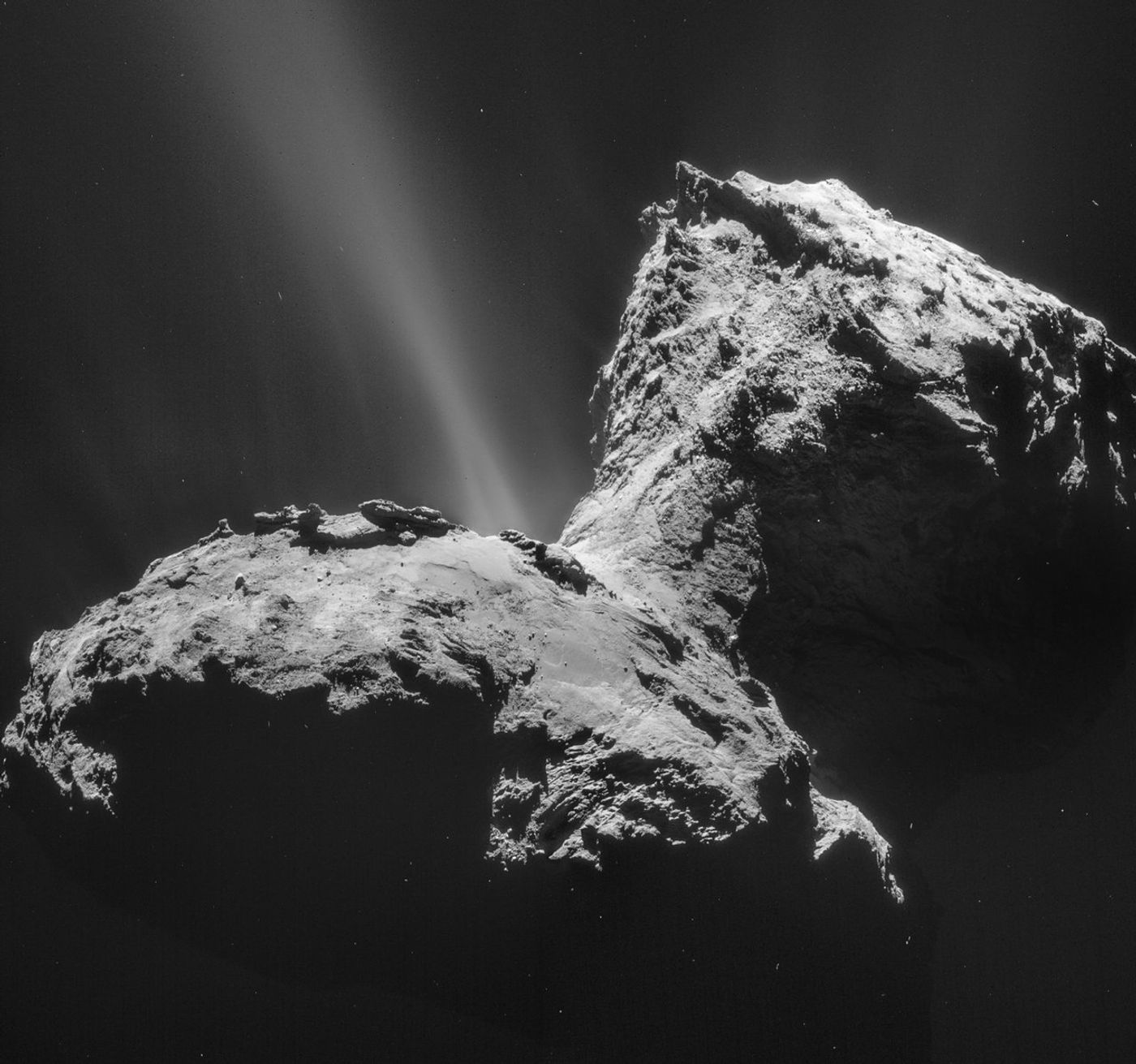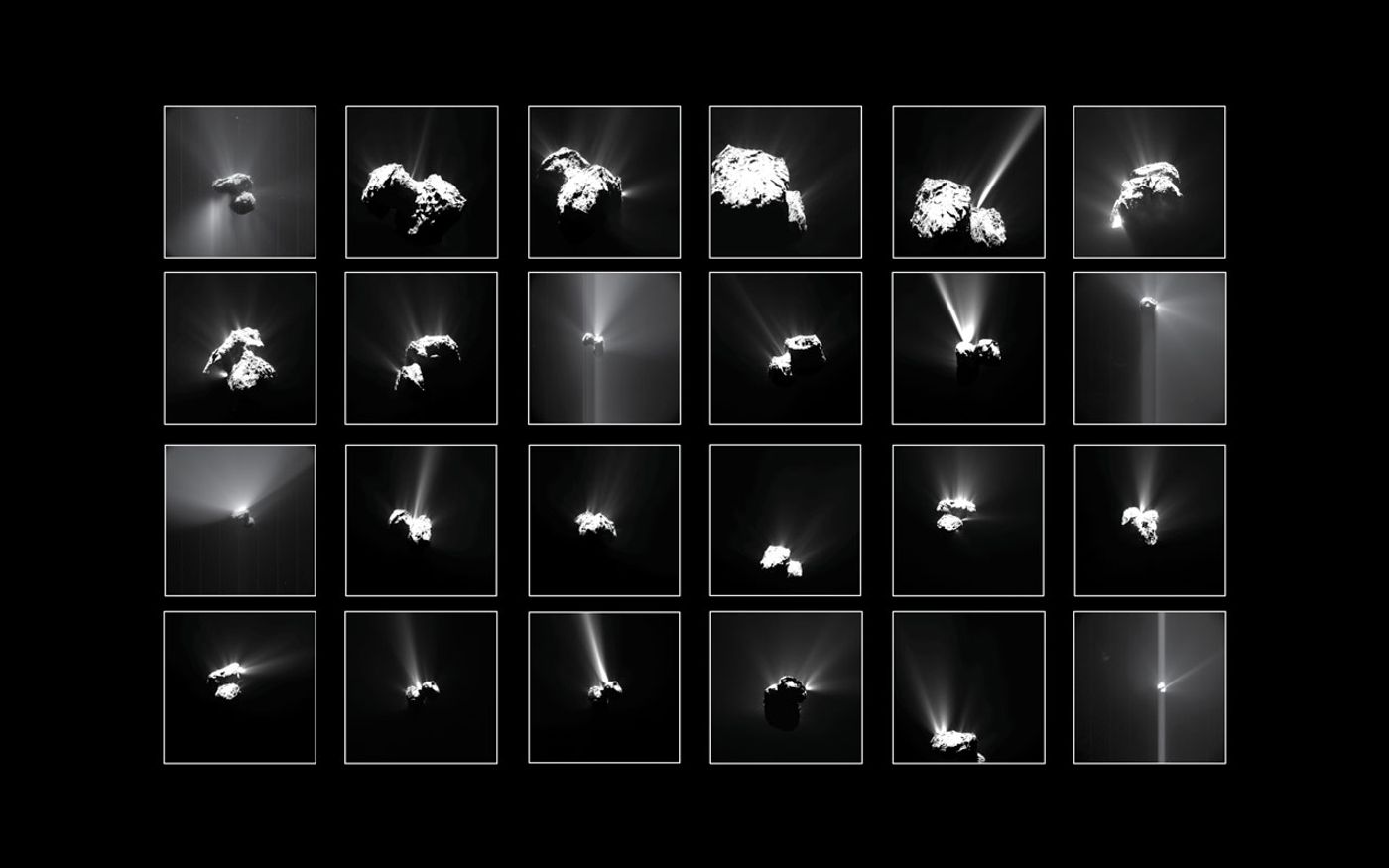Comet 67P Oxygen Abundance Illusion
In 2015, scientists were puzzled when the European Space Agency's Rosetta spacecraft discovered abundant molecular oxygen bursting from comet 67P/Churyumov-Gerasimenko (67P). How could a comet emit oxygen, let alone in abundance? This discovery led researchers to reconsider everything they had known about the chemical history of the solar system and how it formed.
A new study published in Nature Astronomy casts a very different light on previous studies regarding why 67P seems to have so much oxygen, and suggests the comet has two internal reservoirs that make it seem like there's more oxygen than is actually there.
"It's kind of an illusion," said Dr. Adrienn Luspay-Kuti, lead author of the study. "In reality, the comet doesn't have this high oxygen abundance, at least not as far as its formation goes, but it has accumulated oxygen that gets trapped in the upper layers of the comet, which then gets released all at once."
While molecular oxygen (two oxygen atoms doubly linked to each other) is very common on Earth, the exact opposite occurs throughout the universe. When the Rosetta spacecraft found oxygen literally pouring out of 67P, however, this caused all of these longstanding theories turned on its head and made scientists question the validity of studies that came before since nobody had seen oxygen in a comet up until then.
Like all scientists, Dr. Luspay-Kuti and her team were skeptical of these findings. Knowing that comets rotate they experience “seasons” like on Earth, the team examined the molecular data on short- and long-time periods just before the comet's southern hemisphere entered summer and then again just as its summer ended. The study proposes the comet's oxygen doesn't come from water but from two reservoirs: one made of oxygen, carbon monoxide and carbon dioxide deep inside the comet's rocky nucleus, and a shallower pocket closer to the surface where oxygen chemically combines with water ice molecules.
"This isn't just one explanation: It's the explanation because there is no other possibility," said Dr. Olivier Mousis, a planetary scientist from France's Aix-Marseille Université and a study co-author. "If oxygen were just coming from the surface, you wouldn't see these trends observed by Rosetta."
The major implication, he said, is that it means comet 67P's oxygen is, in fact, oxygen that accreted at the beginning of the solar system. It's just that it's only a fraction of what people had thought.
Comet 67P and Rosetta
Comet 67P/Churyumov-Gerasimenko was discovered in 1969 by Kiev astronomers Klim Churyumov and Svetlana Gerasimenko from examining a photograph of comet 32P/Comas Solá and observed another comet-like object in the plate image. Upon returning to Kiev, Churyumov studied the plate very carefully and realized they had in fact discovered a new comet.Launched in March 2004, the European Space Agency’s Rosetta mission was the first to rendezvous with a comet, the first to follow a comet on its orbit around the Sun, and the first to deploy a lander to a comet's surface. During its two-year science mission at 67P, Rosetta’s key findings included the discovery of water vapor in comet 67P/G-C (vapor that is significantly different from that found on Earth), the detection of both molecular nitrogen and molecular oxygen for the first time at a comet, the existence of exposed water ice on the comet’s surface, and the discovery of amino acid glycine (commonly found in proteins) and phosphorus (a component of DNA and cell membranes) in the comet. It also demonstrated the first landing on a comet’s surface, as the Philae lander touched down on 67P in November 2014, sending back incredible images of the surface. The mission ended on September 30, 2016, when the Rosetta spacecraft impacted 67P.
As always, keep doing science & keep looking up!
Sources: Nature Astronomy, European Space Agency (1), European Space Agency (2), NASA Solar System Exploration










